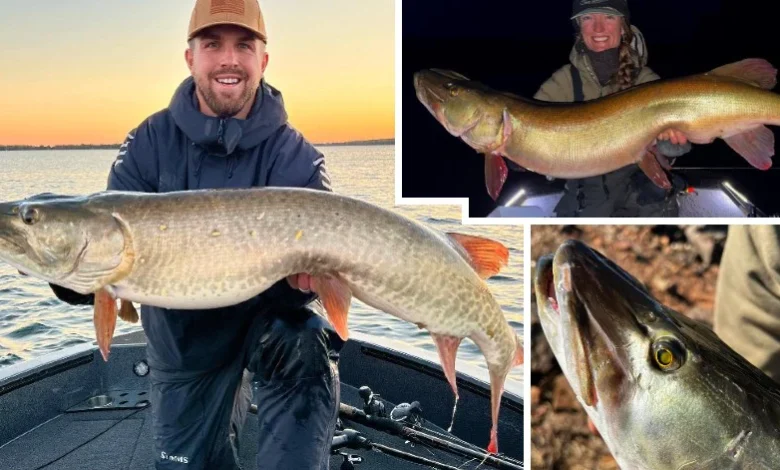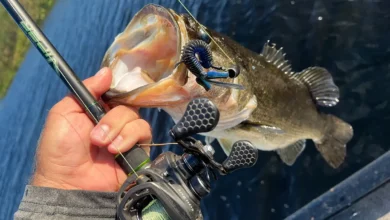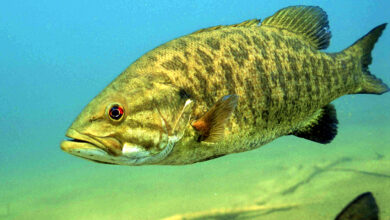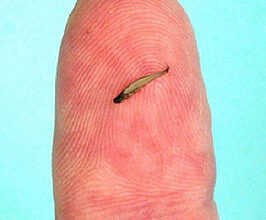Are Muskie Good to Eat? A Friendly Guide for Curious Anglers and Food Lovers

Have you ever reeled in a muskie, admired its size, and thought to yourself, are muskie good to eat? It’s a question that pops up often among anglers. Muskies, or muskellunge as they are formally known, are famous for being elusive trophy fish. They’re admired for their strength, beauty, and the challenge they present to anyone with a fishing rod. But when it comes to the dinner table, opinions are mixed.
Some say muskie taste wonderful, while others insist they’re better left swimming in the water. So, what’s the truth? Let’s dive in and explore muskie from every angle—flavor, preparation, health benefits, and even cultural traditions. By the end, you’ll have a clear idea of whether muskie deserves a place on your plate.
What Exactly Is a Muskie?
Before answering whether muskie are good to eat, let’s get to know this fish a little better. Muskellunge are large freshwater fish native to North America. They are part of the pike family and are often found in lakes and rivers across the northern United States and Canada.
Muskie are apex predators. They feed on other fish, frogs, and sometimes even small birds. Because of their size and power, they have earned nicknames like “the fish of 10,000 casts.” Anglers love them for sport, but their role as a table fish is less commonly discussed.
Why Do People Ask If Muskies Are Good to Eat?
Unlike walleye, perch, or crappie—which are well-known for their delicious flavor—muskie don’t have a strong reputation as table fare. There are a few reasons for this:
- Size – Muskies can grow very large, often reaching over 40 inches. That much meat raises questions about taste and texture.
- Rarity – They’re not caught as often, so people simply don’t eat them as frequently.
- Cultural Preference – Many anglers view muskie as a prized sport fish that should be caught and released, not cooked.
Still, curiosity persists. When someone catches a legal muskie, the temptation to see how it tastes is hard to resist.
The Flavor Profile of Muskie
So, let’s cut to the chase—what do muskie taste like? The answer is a little complicated.
Muskie flesh is white, firm, and mild in flavor. It is not as naturally flaky or buttery as walleye, but it’s not unpleasant either. Some compare it to northern pike, though muskie has a slightly denser texture.
The taste often depends on the size of the fish. Smaller muskie, around 30 inches or under, tend to have cleaner, more tender meat. Larger muskie can sometimes carry a stronger, fishier flavor due to their diet and age.
The Challenge of Bones
One of the biggest obstacles when eating muskie is dealing with the bones. Like pike, muskie are infamous for their Y-bones, which can make filleting a challenge. If you’re not skilled with a knife, you may end up wasting a lot of meat or struggling to enjoy your meal.
However, with practice and proper techniques, the bones can be removed. Some anglers even turn muskie meat into patties or fish cakes to avoid the issue altogether.
Cooking Muskie: Best Methods
If you do decide to try muskie, how should you cook it? The good news is that muskie can be prepared in many ways, much like other freshwater fish. Here are a few popular options:
- Frying – Lightly breaded and fried muskie fillets can be delicious. The crispy coating balances the mild flavor of the meat.
- Grilling – Because muskie has firm flesh, it holds up well on the grill. A squeeze of lemon and some herbs can make it shine.
- Baking – Baking muskie with garlic, butter, and vegetables creates a hearty and comforting dish.
- Smoking – Some anglers swear by smoked muskie. The process adds a rich, savory flavor that complements the fish’s natural taste.
The key is to avoid overcooking. Like many lean fish, muskie can dry out if left on heat too long.
Nutritional Value of Muskie
Beyond flavor, it’s worth asking whether muskie are good for you. The answer is yes—like most freshwater fish, muskie are a healthy source of lean protein. They are also low in saturated fat and provide essential nutrients such as:
- Omega-3 fatty acids for heart and brain health.
- Vitamin D for bone strength.
- B vitamins for energy metabolism.
However, because muskies are apex predators, they may accumulate higher levels of mercury compared to smaller fish. This means muskie should be eaten occasionally rather than as a daily staple.
Muskie in Cultural Traditions
In some communities, muskie have been eaten for generations. Indigenous tribes and early settlers in North America often caught and cooked muskie as part of their diet. In those times, fish was a crucial source of protein, and nothing went to waste.
Today, muskie is less commonly eaten but still holds cultural significance in certain regions. For some anglers, preparing and sharing muskie is part of the fishing tradition, especially when celebrating a big catch.
Catch and Release vs. Eating Muskie
One reason many anglers hesitate to eat muskie is the strong culture of catch and release. Muskies are not as abundant as other species, and fisheries often promote releasing them to maintain healthy populations.
That doesn’t mean eating muskie is wrong. In fact, in some areas, regulations allow keeping a muskie once it reaches a certain size. Responsible harvesting, done within legal limits, ensures the tradition of fishing continues without harming the ecosystem.
Comparing Muskie to Other Fish
To better understand muskie as food, let’s compare them to some popular freshwater fish:
- Walleye – Walleye are known for their delicate, flaky texture and mild taste. They are more consistently delicious than muskie.
- Pike – Pike are the closest comparison. Both have Y-bones and firm meat. Many people who enjoy pike also appreciate muskie.
- Bass – Bass can have a stronger, more “muddy” flavor, especially largemouth bass. Muskie often taste cleaner.
- Trout – Trout are fattier and richer. Muskie are leaner and less oily.
So while muskie may not win every taste test, they are certainly edible and can be enjoyable when prepared properly.
Myths About Eating Muskie
There are plenty of myths floating around about muskie as food. Let’s clear up a few:
- “Muskie are inedible.” False. They are perfectly edible when cleaned and cooked properly.
- “They’re too bony to eat.” While they do have a lot of bones, skilled filleting can solve this problem.
- “Muskie taste terrible.” Not true. Taste is subjective, but many people find muskie mild and enjoyable.
Tips for Preparing Muskie at Home
If you want to try muskie at home, here are a few friendly tips:
- Choose smaller fish – Younger, smaller muskie usually taste better.
- Fillet carefully – Learn the technique to remove Y-bones.
- Soak in milk or lemon water – This can help reduce any strong flavors.
- Use spices and marinades – Muskies pair well with garlic, paprika, and fresh herbs.
These little tricks can turn your catch into a tasty dinner rather than a disappointment.
Environmental Considerations
Because muskie are less common than other fish, it’s important to fish responsibly. Always follow local regulations about size and bag limits. Overharvesting could put pressure on their populations, which would affect the health of lakes and rivers.
Some anglers prefer to release larger muskie, which are important breeders, and only keep smaller ones for the table. This balance helps maintain healthy ecosystems.
Are Muskies Worth Trying?
After all this, you might still be wondering—should you actually try eating muskie? The answer depends on your curiosity and cooking skills.
If you’re looking for the most delicious freshwater fish, walleye or perch may be better choices. But if you want to experience something different and enjoy the satisfaction of eating what you catch, muskie can absolutely be worth a try.
It may not be a fish you cook every week, but it can make for a memorable meal and a great fishing story.
The Future of Eating Muskie
As interest in local and sustainable foods grows, some anglers predict muskie may gain more attention as a table fish. With improved filleting techniques and creative cooking methods, more people could discover the hidden potential of muskie as a meal.
At the same time, conservation efforts will continue to protect muskie populations, so their role as a sport fish will remain strong. The balance between fishing for fun and fishing for food will always be part of the conversation.
Final Thoughts: Are Muskie Good to Eat?
So, are muskie good to eat? The honest answer is yes—they are edible, nutritious, and can be tasty when prepared properly. They may not rival walleye or trout in flavor, but they have their own charm.
Muskie are more than just a trophy fish. They’re part of fishing culture, history, and tradition. If you ever get the chance to try muskie, approach it with an open mind. With the right recipe and preparation, you may discover a new appreciation for this legendary fish.
And even if you decide not to eat one, you can still enjoy the thrill of the catch, the beauty of releasing it back into the water, and the unforgettable story that comes with reeling in a true freshwater giant. blogvista.co.uk/



